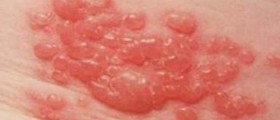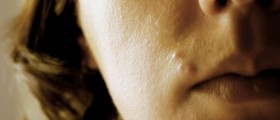
Fever blisters are considered to be a common health problem. The other name for fever blisters is cold sores. According to data, these blisters tend to come back after a person has thought that he or she has cured them. An interesting thing is that they always seem to appear when they are least wanted. Fever blisters are also practically impossible to hide once they appear on the face. However, it is important to know that these inconveniences can easily be avoided with proper mouth care.
Fever Blisters are not Comfortable
According to data, almost 80% of the population in the United States is considered to be infected with the virus associated with fever blisters. This virus is hidden in the nerve cells of the face. Even though the number of those who have the virus is huge, not all people infected with it experience fever blisters.
The virus which causes the onset of skin and mouth lesions is called Herpes simplex virus type 1. Such skin lesions look like small and clear liquid-filled blisters. In almost all cases of Herpes simplex virus type 1 infection blisters appear on the face. Apart from the face, they can also develop in the genital area, but these cases are really rare and predominantly caused by Herpes simplex virus type 2. Fever blisters may also occur in the wounds on the skin but this is also not so common occurrence.
Even though fever blisters do not look dangerous or problematic, they cause a lot of pain. The mouth area is the most common place where they develop. The lips, chin, cheeks and in some rare cases even inside of the nostrils are other affected areas. During the initial infection fever blister may develop inside the mouth. If that happens, they appear on the gums or on the roof of the mouth. However, the good thing is that lesions affecting the oral cavity heal much quicker. These lesions are highly contagious and the affected individuals may easily transfer virus to other people, especially if fever blisters rupture and fluid kept inside is released.
Other Mouth Problems
In every case of fever blisters, the underlying cause is a virus called Herpes simplex virus type 1. However, there are certain factors which can lead to an outbreak of fever blisters. Stress in one such factor. Both emotional and mental stress can initiate an outbreak of fever blisters. Apart from stress, dental treatment, certain illnesses, trauma to the lips or even sun exposure can all lead to this medical issue. Herpes simplex virus 1 can also affect the eyes, the skin of the fingers and the genitals.
In order to fight the outbreak of cold sores a person first needs to get to know the symptoms. Those who are affected by the virus for the first time will experience fever, headache, nausea and vomiting. Sore throat is possible as well but painful swelling and open sores in the mouth are more common. The symptoms usually start 7 days after a person got infected with the virus. Fever blisters do not occur at that time but later in life when the virus is reactivated. Those who have weakened immune system or take certain medicines are more prone to cold sores that other people.
Management of Fever Blisters
First of all, it is important to know that there is no way Herpes simplex virus 1 can be erradicated. There is still no known cure. However, with proper mouth care a person can prevent fever blisters from occurring and reoccurring. There are a lot of ways this can be achieved.
If someone has an active fever blister, skin-to-skin contact with that person must be avoided for as long as he or she has an active disease. Apart from skin-to-skin contact, sharing items such as a glass or a toothbrush should be avoided as well.
Oral sex need to be avoided with a person with an active fever blister until the sore fully withdraws.
Those who smoke have a greater chance of suffering from an outbreak of fever blisters and that is why quitting smoking is of vital importance.
Avoiding mouth injuries is important too. A person can injure his or her mouth by over-brushing the teeth or by eating hard foods and that needs to be avoided in order for the risk of fever blisters to be reduced.
When eating, making sure to chew slowly will drastically decrease the risk of disease recurrence.
Appointments with the dentist must not be avoided or skipped. The dentists will tell the patient about proper oral hygiene, which is an integral part of prevention of fever blisters.
Apart from these tips, there are others which will reduce the chance of developing fever blisters such as reducing stress, sticking to a healthy and balanced diet, drinking a lot of water and avoiding consuming really hot food and drinks.

















Your thoughts on this
Loading...